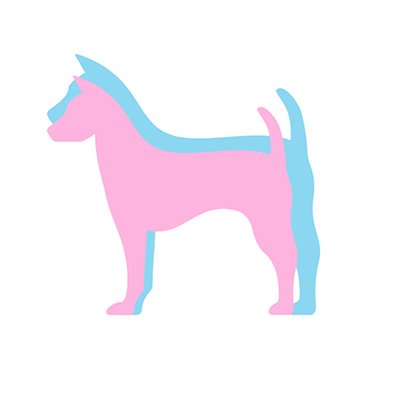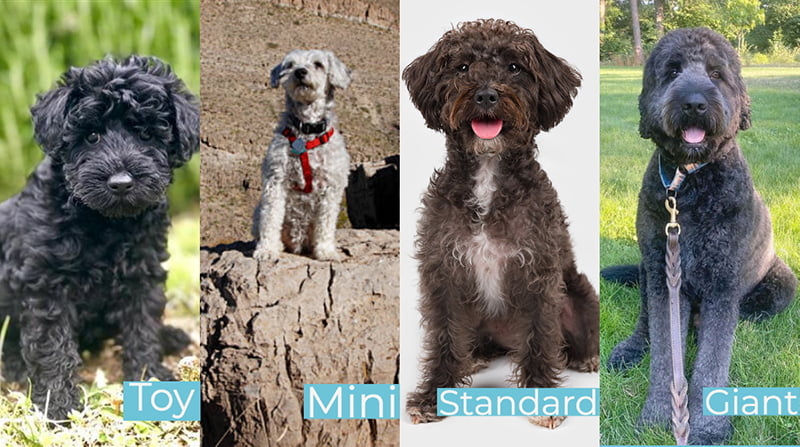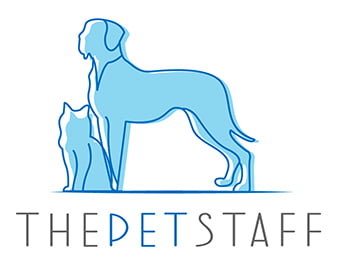Schnoodles are an adorable hybrid of a schnauzer and a poodle; some even refer to them as "teddy bears." Aside from their adorable appearance, their intelligence and high energy make them a popular hybrid dog breed today. Miniature Schnoodles are a particularly adorable and popular variation of the breed, and all Schnoodles have the added benefit of being low-shed and allergy-friendly dogs. These curly-haired fun balls of personality can make great family pets and companions.
So is the Schnoodle the dog for you? Are you ready to bring this breed of dog home? Let's find out.
Breed Characteristics
Temperament | Friendly, intelligent, affectionate |
Intelligence | High |
Affection/Friendliness | Very loving with family |
Trainability | Highly Trainable |
Mental Stimulation | High – tricks, agility, obedience, puzzle toys |
Exercise Needs | Moderate to high – daily walks, play, runs |
Apartment Living | Suitable with exercise |
Family Friendly | yes |
Pet Friendly | Yes, with socialization |
Drooling Level | Low |
Energy Level | Moderate to high |
Loneliness Tolerance | low |
Adaptability | high |
Tendency to bark | Moderate |
Origin
The Schnoodle is a designer dog, a mixed breed of a schnauzer and a poodle parent. Poodle hybrids were becoming increasingly popular due to their low-allergen coats (Labradoodles and cockapoos), so in the 1980s, the Schnoodle dog breed began to be developed.
Poodles come in three sizes, a toy poodle, a miniature poodle, and a standard poodle. Schnauzers also come in three sizes, miniature Schnauzer, Standard Schnauzer, and a giant Schnauzer, so there is no regulatory standard for what size a Schnoodle will be. This is why the breed is not recognized by the American Kennel Club yet.

Breed Overview
Height: 10-26"
Weight: 10–75 lbs
Height: 10-26"
Weight: 10-75 lbs
Breed Group
Designer
Life Span
12-16 years
Coat
Wavy or curly
Coat Length
Medium
Hypoallergenic
Yes
Shedding Level
Low
Size
Schnoodles can range from 10 to 75 pounds, with the miniature Schnoodle growing to be about 10-12 inches tall and weighing about 10-20 pounds.
The Schnoodle size will vary based on their Poodle and Schnauzer parent size.

Personality
The Schnoodle has a bright and calm personality. They are funny and smart dogs with sweet temperaments and loyal affections. They generally have the Poodle's willingness to please with Schnauzer's sturdiness and energy. Schnoodles can be very attentive dogs with a double dose of schnauzer and poodle alertness but generally are friendly and lovable pets.
As with every day, Schnoodle will need early socialization to ensure that it grows up to be a well-rounded dog. Enrolling your Schnoodle puppy in kindergarten glass is a great start.
Appearance/Colors
The appearance of a Schnoodle will greatly depend on the parents' generation and whether or not the puppies lean more towards poodles or schnauzers. Even then, there is some variation even in those individual breeds, so what any Schnoodle puppy will look like will vary quite a bit.
Schnoodles may have curly coats, either soft and wavy or tight and curly like a poodle, or may end up with a more long and wiry coat like a schnauzer. Either way, the color variations could be black, gray, silver, brown, white, apricot, sable, back and white, or black and tan.
Temperament
Schnoodle temperaments will be based on how much they take from their Poodle and Schnauzer parents. In general, Schnoodles have relatively calm, even temperaments, love to play, and being the center of attention.
This hybrid dog loves its people and is very protective of its family, making them a wonderful watchdog. They can be a bit skittish around very small children and other small pets, but they do well with older kids, and the right training can teach Schnoodles to get along with other household pets. With proper socialization, the Schnoodle puppy can grow up to be a well-rounded dog.
Due to their loyal nature, they can be very wary of strangers, and they will need to be thoroughly socialized as puppies to ensure that this doesn't become an issue.
The Schnoodle is a sweet and calm dog that can make great therapy and companion dogs, making them good pets for seniors.
Diet/Nutritional Needs
Schnoodle dogs are prone to weight gain, so knowing what to feed your dog and how much dog food to provide is essential to maintaining their overall health. You should talk with your vet about the quantity and type of food to feed your dog, given its age, size, and activity level.
Most Schnoodle owners feed two measured meals every day instead of leaving food out all the time. You will also need to keep additional treats and human scraps to a minimum. There should always be access to clean, fresh water at all times.
Activity/Exercise Needs
Schnoodle is a high-energy dog and is no couch potato dog. Both Poodle and Schnauzer are working breeds, and this means Schnoodles are highly active dogs.
Schnoodles have average exercise needs, and they are more active than some small dog breeds but also adapt to whatever their human lifestyle is. A good walk and playtime every day should be sufficient for most miniature Schnoodles, though if your dog is struggling with obesity, increasing physical exercise could be beneficial.
Schnoodles can do very well in dog sports like agility, flyable, obedience, and rally. They also enjoy swimming. Mentally stimulating toys and games are useful, too, though Schnoodles are not as prone to boredom issues as other dogs. They are prone to diseases made worse by obesity, so daily exercise of some kind is a must.
Grooming Needs
Despite the Schnoodle being a low shedding breed, Schnoodle's coat does require grooming attention. Depending on the individual dog's coat, the amount of grooming needs varies.
The Schnoodle coat resembles a Schnauzer's puppy's soft and wavy coat. Schnoodles with soft, loose, or wavy dog hair will require more frequent grooming and trimming. These coats tend to mat and tangle very easily, which can be painful and troublesome to brush out. Schnoodle with a rough, wiry coat will not require as much grooming, but weekly brushing is recommended with some trimming to keep it tidy.
No matter what type of coat your Schnoodle has, these dogs should be bathed on a needed basis to keep their coat soft and looking their best.
Like any dog, Schnoodle nails should be checked and trimmed regularly, especially if your dog doesn't wear them down naturally. Otherwise, you will hear clicking on the floor if their nails become too long.
With longer ear hair, you must also make regular ear examinations a routine. You will want to check for any sign of irritation, infection, dirtiness, or wax build-up in the ears and clean gently with ear cleaners as needed. Ears should smell good and without much wax and gunk inside.
Schnoodles will require their teeth brushed regularly, especially small dogs, as they are prone to periodontal disease. It is recommended by the vet that you brush dog teeth daily to prevent gum disease and bad breath. If this is not possible, brush at least two or three times a week to remove tart build-up and bacteria.
Adaptability
Schnoodles are a relatively adaptable dog breed, as long as they have their people with them. For this reason, they must be indoor dogs, and miniature Schnoodles also make great apartment dogs.
Schnoodles may have trouble getting along with other pets, and they are not great sharers and may chase smaller pets.
With proper and consistent training, it is possible to teach them to get along with other household pets, however. They are not prone to separation anxiety and can be left alone for short amounts of time without fear of them becoming destructive or stressed.
Trainability
Schnoodle puppies are very trainable, with very keen smarts and high intelligence. You will want to start as early as possible with both socialization and obedience training to ensure that habits are instilled at a young age. If possible, get your puppy into puppy kindergarten class by 10 to 12 weeks old.
Schnoodles are very intelligent dogs that enjoy training and can learn ticks rapidly. These dogs can be a bit willful, so it is important to use only positive reinforcement and to find what motivates them to encourage them to obey. With patience and consistency, these dogs can be pleasant, friendly, and social creatures that can go wherever you go with manners to spare.
Life Expectancy
The life expectancy of a miniature Schnoodle is the longest of all the Schnoodle types. A healthy Schnoodle can be expected to live as long as 10 to 18 years.
Potential Health Issues
Because a Schnoodle is a mixed breed dog, the potential health issues at play in a Schnoodle will be a mix of the two separate breeds' issues. Thankfully the hybrid is generally healthier than either purebred dog is separately, and the more multi-generational the parents, the more healthy the puppies can be expected to be. A few common Schnoodle conditions include—
Gastric Dilatation-Volvulus- This is also known as "bloat" and is often a fatal disease that occurs if the dog eats quickly, drinks a lot of water, or exercises after eating. The stomach becomes distended and twisted, and the dog cannot expel excess gas, which causes blood pressure to drop and lead to death if immediate attention is not provided.
Epilepsy- This seizure disorder will cause Schnoodles to lose consciousness or experience muscle convulsion. Unfortunately, there is no treatment for it, and however, a veterinarian may be able to help manage the disorder.
Progressive retinal atrophy- A disorder in which the retina slowly deteriorates and can lead to complete blindness over time.
Cataracts- A cloudy membrane forms over the eye and causes vision loss. This can be treated through surgery.
Luxating Patella- This is when the bone of the patella is not aligned properly and results in moves out of place. Mild cases don't require treatments, but severe cases may require surgery.
Hip And Elbow Dysplasia- This is prevalent in both parent breeds, but the good news is that it can easily be diagnosed through x-ray.
Schnauzer-specific Health Issues
- Bladder Stones
- Kidney stones
- Pancreatitis
- Hip dysplasia
- Epilepsy
- Diabetes
Poodle-specific Health Issues
- Hip dysplasia
- Epilepsy
- Progressive retinal atrophy
- Thyroid issues
- Endocrine Issue
Schnoodle Puppy
Schnoodles are often referred to as "designer breed" or "designer dogs", you may find them in the care of rescue groups or at an animal shelter. If you are considering using a breeder, look for a reputable breeder. Be sure to research and vet the breeders carefully for people who breed humanely and ideally breed with multi-generational parents to produce the healthiest puppies. This means that rather than breeding a purebred schnauzer and Poodle every time, they are actually breeding Schnoodles. The further back the Schnoodle's parentage goes by generation, the healthier the puppies will be.
Reputable and licensed breeders should also have screened litter parents for health issues and should be able to show proof of this. Be sure to ask for evidence that shows both puppy parents have the appropriate certifications from health registries like Canine Eye Registry Foundation or Orthopedic Foundation for Animals. Also, learn about any conditions your puppy may be predisposed to, and as a reference, check against potential puppy mills and pet stores.
